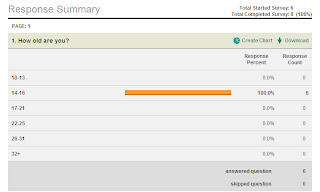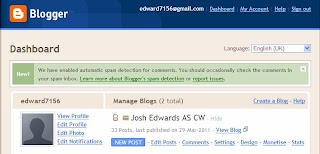Conventions of a front page are a bold clear masthead that stands out to the target audience that is easy to read and eye catching. It also should be a bright bold colour making it clear to the audience. A main image that dominates the front page relating to the coverlines and main features on the page. A consisten colour scheme should be used throughout to make sure it attracts the audiences attention. Coverlines should be used to tell the audience what is featured in the magazine. A barcode, date and price should be added to make the magazine more realistic and proffessional.
Conventions of a Contents page are a clear masthead showing what the page will consist of. A main features list showing what artists and other features are shown within the magazine. Clear use of images from the artists featured in the magazine. Page numbers telling you what features are where. A large clear, dominant font used to attract audiences attention. Use of continous colour scheme that attracts audience attention.
Conventions of a Double page spread are images showing the band. A factfile on the band that is featured in the double page spread. Pull quotes from the text. A main masthead stating who the band is that is featured. Again the use of the same colour scheme throughout. Article put into columns with a clear font. Page numbers at the bottom of the page to make it looks proffesionally.
My front cover is conventional as i have a clear main masthead that shows my the name of my magazine 'Pulse' clearly. I also have many coverlines that tell the audience what the magazine will feature attracting their attention. The coverlines are a different colour to the masthead and main coverline to allows the masthead and maing coverline to stand out more and attract the audiences attention. The front cover also has a price, date and barcode which gives it a proffesional finish to make the magazine look more realistic. The main image used fills most of the page which is conventional. It also shows an Indie looking character with a checkered shirt, headphones and an Indie style haircut so that the main image fits the theme and genre of the magazine. I also added a logo to the front cover to show that my magazine is part of an institution giving it more of a proffesional feel to it. I also added exclusive offers such as 'album samplers to make them more interested in the magazine. I used a black, white and purple colour scheme throughout the magazine to make it consistent and seem proffesional and realistic. I also used Sans Serif fonts to make it easy on the eyes of the audience creating an Indie feel to my magazine as its laid back. My front cover follows the principle of thirds as the hotspots on the page are the main coverlines and main image as they are the most important memorable thing. The route of the eye goes from the masthead, to the main image, to the coverlines, to the main coverline and then down across the other main features.
My Contents page is conventional as it has a clear main masthead saying that it is the contents page. It uses the same colour scheme as the front cover also to create a proffesional look. It has images that relate to the articles shown, the images also show conventions of being Indie through the use of props and the costume used. It has a clear list of what bands and features are shown in the magazine to allow the audience to find things easier. It also shows the audience what page numbers they appear on. The masthead text is of a different font to the rest of the page to make it stand out more, Sans serif fonts are used to make it easier to read. The page is also very ordered and non scattered which makes it easier for the audience to understand the page. I also added the Pulse masthead in the right hand corner again to make the page more proffesional and catch the eye of the audience. My contents page follows the principle of thirds rule as the hotspots are the images showing the bands, and the text on the left hand side telling you what is featured. The route of the eye shows what the page is about, then the images, and then finally the page numbers and main features.
My Double page spread is conventional as it has again a clear masthead which grabs the audiences attention and tells you what the main article is about. I also put the main article into paragraphs so its easier to read and more proffesional. I added an image of the featured band to make it more appealing and appropriate. i added a pull quote to make it again more appealing. I added a fact file to make it more proffesional. I used the same house style and colour scheme throughout again so it made it more proffesionally and appealing for the audience to view. Different fonts are used between the masthead and article text, to make the masthead stand out more, Sans serif fonts are used to make it easier for the audience to read. I also added page numbers at the bottom so it was more conventional and realistic. My double page spread follows the principle of thirds rule as the main hotspots are the masthead and article text, which are the main features on the page. The route of the eye also goes through the masthead, then through the text and then finally again along the bottom.






















